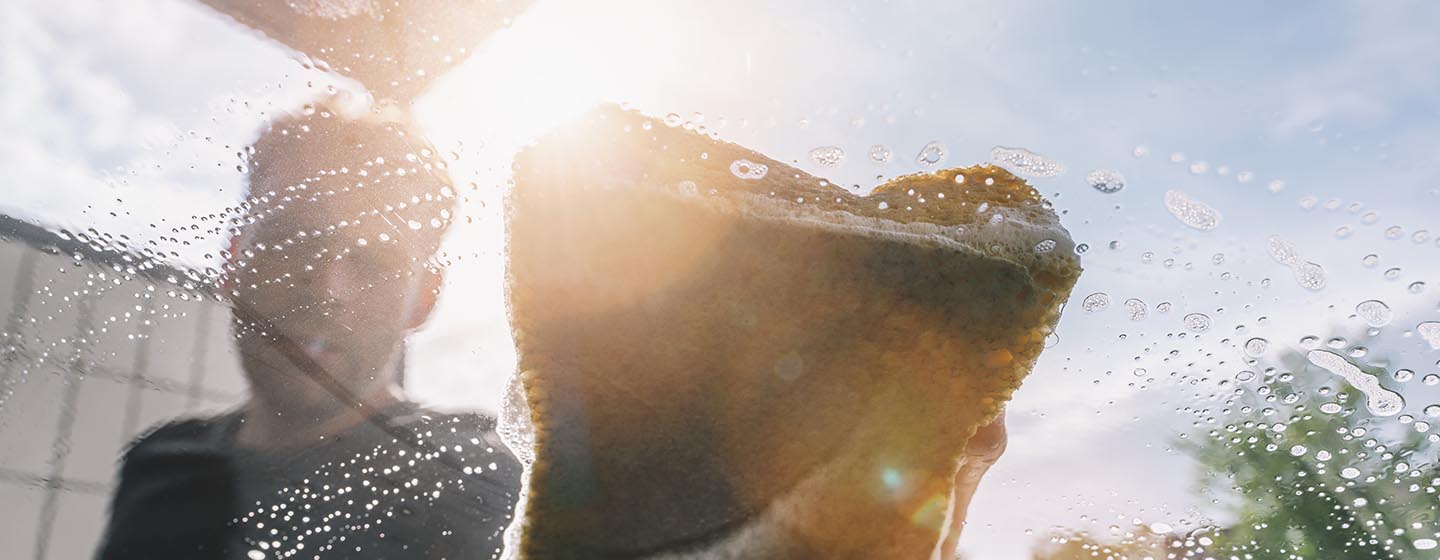Essential spring car care you shouldn't ignore
How did your car hold up in winter? Rust, misalignment, low fluid levels and loose parts are just a few ways winter conditions take a toll on our cars. Taking your vehicle in for regular maintenance and repair, especially after a cold winter, will help ensure it runs efficiently, maintains a good resale value and lasts longer. Ultimately, it will help you save money and keep you and your family safe on the road.
To keep your car in top shape, BCAA Automotive Experts compiled a list of some must-do maintenance for your car once winter comes to a close.
Bonus tip: As part of your spring clean, don’t forget to double check your BCAA Membership plan to ensure you have appropriate coverage for your current needs.

On the outside
1. Wash your car
Letting road salt and other dirt and grime stay on your vehicle for longer can cause corrosion and damage to your car. Here are a few winter car-washing tips:
- Be sure to clean the undercarriage which often has road salt buildup.
- Don't wipe off the salt as the grains can scratch off the paint and cause other components to corrode.
- Check for signs of rusting or corrosion and make sure all salt buildup has been cleaned off every exterior surface of your car.
2. Check tire wear and pressure
Make sure you have the right amount of tread on your tires — your tires should have a little more than the minimum tread depth recommended by the manufacturer.
- Check that all four tires are wearing out evenly.
- It's recommended to regularly check the pressures of your tires. You'll find the correct inflation pressure in your owner’s manual, inside the driver’s door or check with the tire manufacturer.
3. Only replace winter tires after all threat of snow and freezing temperatures are gone
Hold off on replacing your winter tires if there’s still a chance for snow or freezing temperatures in your region, or if you plan to travel to mountain areas still covered in snow.
Winter tires are legally required on most BC highway routes until April 1, although some highways that go through mountain passes or high snowfall areas require winter tires until April 31. Be sure to get ahead on booking your tire change appointment. It’s important to avoid keeping winter tires on your car for too long after winter's over as it can damage and wear your tires out prematurely. Swap out your tires so their tread lasts longer and they can be used again for more winter seasons.
4. Replace windshield wiper blades
Wiper blades may be easy to forget about until it’s too late and you’re in the middle of a downpour and can’t see through your windshield. Your wiper blades have been subjected to snow, rain, ice and salt spray over winter so they may be pretty worn down.
- Replace your windshield wiper blades every spring at least and then again every fall, or any time they’ve become cracked or torn.
- When you see any streaking on your windshield, that’s a sign your wiper blades need to be replaced.
On the inside
Regular basic maintenance helps you avoid costly repairs down the road and is the best way to save money and ensure you’re safe. Once winter conditions have come to a halt in your area, take your car to an auto service centre to have it checked for the following:
1. Oil and fluids
Get a professional to check your engine oil and car fluids, such as your windshield washer, transmission and power steering fluids, to ensure they’re at the right levels.
2. Wheel alignment and suspension
Poor road conditions and potholes appear more frequently in the winter and can be harsh on your vehicle's tires, wheel alignment and suspension system. If you travel regularly on pothole-riddled roads, having these checked is important for safety.
3. Brakes
The constant exposure to ice, snow and road salt can really affect your brakes. Get them checked for any corrosion or wear. If you hear a squeaking, whistling or other sounds when applying the brakes — don’t wait — have them checked as soon as possible. Those sounds could mean your brakes are worn or that there are some other issues that need to be assessed. Additionally, even if your brakes don't need replacing, it's still recommended to book a break service after the harsh winter conditions to prolong the life of your brakes.
4. Hoses and belts
Cold temperatures can make belts and rubber hoses brittle and weak. Have these checked for cracking or wear. Replace any hoses or belts that show damage.
5. Battery
Low and freezing temperatures slow down the battery's chemical reaction which forces your battery to work harder. Get your car battery tested and replaced if necessary. Learn more about our top tips for proper car battery care.
Get your car back in top shape
To help with post-winter car care and safety, BCAA Auto Service Centres offer spring maintenance packages starting at $71. Packages come with oil and filter change, wheel alignment check, and a comprehensive 42-point inspection that includes four-tire rotation (if needed), battery and fluid checks, and even a free car wash for BCAA Members!







